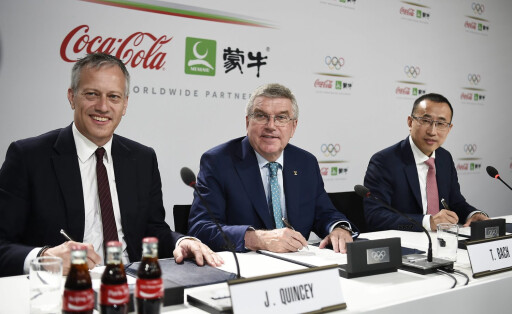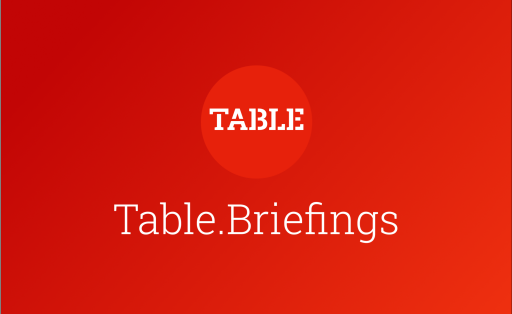Xinjiang Xinjiang is an autonomous region in the northwest of the People's Republic of China. Internationally, the region is known mainly for human rights crimes committed by the Communist Party against the Uyghurs living there. The Table.Media editorial staff has all the news on this.
China: Uyghur Autonomous Region Xinjiang
Officially, the Chinese Communist Party refers to the area as the Uyghur Autonomous Region of Xinjiang. The Uyghur independence movement calls the region East Turkestan. This refers to an area about five times the size of Germany. This makes Xinjiang the largest of China's 33 administrative units in terms of area. Around 26 million people live here. This puts the region in 21st place out of 33. Xinjiang has always been home to a wide variety of Muslim ethnic groups. Among them, the Uyghurs are the largest. Since Xinjiang was incorporated into the People's Republic of China in 1949, there have been repeated conflicts between Han Chinese and Uyghurs. The Communist Party is accused of wanting to replace the native culture with its own. In order to achieve this, massive human rights violations occur in Xinjian, as the non-governmental organization Human Rights Watch reports. The Scientific Service of the German Bundestag as well as the government of Canada even speak of genocide.
What does Xinjiang mean?
Xinjiang is one of five autonomous regions in China. The other four are Guangxi, Inner Mongolia, Ningxia and Tibet. Early on, Xinjiang was of enormous importance to the People's Republic of China. This is because the region on the Tianshan ("Mountains of Heaven") was part of the Silk Road as early as the Han Dynasty (206 B.C. to 220 A.D.). At that time, the region was still called Xiyu, which means "western territories". The current name Xinjiang dates back to 1884 and means "new frontier". The high percentage of Muslim inhabitants dates back to the Middle Ages. At that time, more and more Muslims settled in the region. The area was heavily contested. Although the area was liberated from the Mongols under the last imperial dynasty of China, the inhabitants of the area were henceforth considered subjects of the Chinese. When the Qing dynasty broke up, Xinjiang was briefly independent.
Xinjiang: what is the history of the largest region in China?
In 1933, Sheng Shicai established a military dictatorship in Xinjiang. In response, the Islamic Republic of East Turkestan seceded in the south of the country. With the help of the Soviet military, Sheng Shicai put down this unrest. He allied himself with the Guomindang and ruled Xinjiang with a hard hand. The "Three Regions Revolution" ended his rule. Again, Muslims proclaimed the Republic of East Turkestan, but it was not recognized by any state. With the founding of the People's Republic of China in 1949, the Communist Party also incorporated Xinjiang. Thus, Xinjiang was under the control of the government in Beijing. In 1955, the government established the Uyghur Autonomous Region of Xinjiang. Both the Cultural Revolution (1966 to 1976) and the subsequent economic miracle affected the region in the northwest just as much as the other areas of the People's Republic.
Xinjiang: China's largest region
Xinjiang is the largest region in China in terms of area, occupying one-sixth of the People's Republic. At nearly 1.7 million square kilometers, the area is five times the size of Germany. The borderline of 5,600 kilometers makes up a quarter of China's borderline. Due to its location in the northwest of the country, Xinjiang borders a total of seven states: Russia Pakistan Afghanistan Kazakhstan Mongolia Tajikistan Kyrgyzstan A large part of the area is occupied by the Tarim Basin, the homeland of the Uyghurs. The Taklamakan Desert is also located in it. The Turfan Depression is also important for Xinjiang. It lies up to 155 meters below sea level, which makes it very warm. Thanks to the Turpan irrigation system, an underground well system, the area is very fertile.
Xinjiang: a province with agricultural importance?
Because of the fertile Turfan Depression, agriculture is of enormous importance in Xinjiang. Not only for the region itself, but for the entire People's Republic of China. Grapes, melons, pears, tomatoes, grain and sugar beets are grown here. Livestock farming, on the other hand, is less widespread. Only in the north of the area are sheep widespread. The Xinjiang Production and Construction Corps (XPCC), or "Bingtuan," is responsible for the administrative organization of agriculture. A paramilitary organization founded in 1954 on the orders of Mao Zedong. Its purpose was to develop the border areas economically. The Communist Party deployed 175,000 military personnel for this purpose. Although the XPCC was disbanded in 1975 during the Cultural Revolution, it was re-established in 1981. Because the Mujahidin quickly gained power after the Soviet Union invaded Afghanistan in 1979, the XPCC was again to stabilize the border area.
What is the Xinjiang Production and Construction Corps?
The Xinjiang Production and Construction Corps (XPCC) is considered an extension of the government in Beijing. The Bingtuan coordinates the colonization of the area in northwest China. For example, by 2001 alone, the corps built more than 2,000 settlements, over 90 percent of which were occupied by Han Chinese, according to Swiss Refugee Aid. The XPCC also maintains its own prisons, in which political-oppositional Uyghurs are also imprisoned. For the Chinese Communist Party, the XPCC is enormously important in order to exert direct influence on the Xinjiang region without having to deal with regional governments, Swiss Refugee Aid summarizes the role of the Bingtuan. For example, the paramilitary organization has been deliberately settling Han Chinese for five decades in order to strengthen their economic and political influence in the Uighur homeland.
Why is Xinjiang important to China?
Xinjiang is important to China because of its vast coal, oil, and gas resources. One-fifth of China's production of these commodities comes from Xinjiang. Another important point is cotton. 85 percent of China's cotton comes from this area. That is more than one-fifth of total world production. Around 70 percent of this quantity is still picked by hand. For his study, Adrian Zenz evaluated government documents and state media reports and states that forced laborers have to do this job. The Chinese government denies the accusation.
Who is producing in Xinjiang?
In its report "Uyghurs for Sale," the Australian think tank Australian Strategic Policy Institute (ASPI) lists a total of 82 internationally known companies doing business in Xinjiang. They could profit at least indirectly from the forced labor of the Uyghurs. Many German companies are also included. This is explosive. Because the Scientific Service of the Bundestag evaluates the treatment of the Uyghurs as genocide and writes of an "obligation to break off business relations" for German companies in Xinjiang. According to the ASPI, Adidas, BMW, Bosch, Mercedes-Benz, Nike, Puma, Siemens and Volkswagen, among others, would be affected. But major corporations from other countries also maintain business relationships in Xinjiang. Amazon, Apple, General Motors, Google, Microsoft, Nintendo, Samsung and Sony, among others, are also accused of profiting from the oppression of the Uyghurs.
How many Uyghurs are there?
There are about 15 million Uyghurs worldwide, estimates the study "Identity and Mobilization in Transnational Societies: A Case Study of Uyghur Diasporic Nationalism." About ten million of them live in Xinjiang, most of them in the Tarim Basin, an area in southern Xinjiang. That is 0.75 percent of China's total population. Between 1978 and 2020, the population of Uyghurs in China had nearly doubled because the minority was exempt from the now-abolished one-child and two-child policies. The proportion of Han Chinese in Xinjiang has traditionally been high. Back in the 19th century, they made up about 30 percent of the population, while Uyghurs accounted for 60 percent. Today, they make up only 46 percent of Xinjiang's population. Rebiya Kadeer, a Uyghur human rights activist, accuses the Communist Party of Sinicization. The native culture of the Uyghurs is being deliberately pushed into the background.
China's genocide against the Uyghurs?
The reports about a targeted fight against the Uyghurs, however, go far beyond a cultural takeover. The German China researcher Adrian Zenz, for example, published a study. In it, he shows that the birth rate in Xinjiang declined by an average of 24 percent from 2015 to 2018. Zenz attributes this to forced sterilizations and abortions. In addition, the United Nations estimates that about one million people in Xinjiang would be held in internment camps. The Australian Aspi Institute has identified 380 such camps in the region. The Communist Party does not deny the existence of the camps, but calls them "training centers" where "learning courses" would be offered. The so-called "Xuexu Ban." The government justifies the crackdown with the fight against Islamist terrorism.
Is there evidence of forced labor in Xinjiang?
According to the Australian Strategic Policy Institute's research, the inmates of these camps would also be used as forced laborers. According to their research, a total of at least 80,000 Uyghurs were taken from the camps directly to factories between 2017 and 2019. The think tank was able to trace forced labor to Highbroad Advanced Material. The company manufactures lighting modules and LCD components, among other products, which they would supply to display manufacturer BOE Technology Group. The company, in turn, supplies its products to BMW, Jaguar Land Rover, Mercedes-Benz and Volkswagen, among others, according to "Uyghurs for Sale." The automakers themselves are named as customers by Highbroad Advanced Material. Jaguar Land Rover, at least, denies any collaboration.
News about Xinjiang
Xinjiang is an extremely important area for the People's Republic of China, both for exports and for its own supply of raw materials and food. But the Communist Party is internationally criticized for its treatment of the Uyghurs. Business relations are thus more difficult. An important point. Especially with regard to the New Silk Road. All relevant news and developments around Xinjiang are provided by the Table.Media editorial team.






